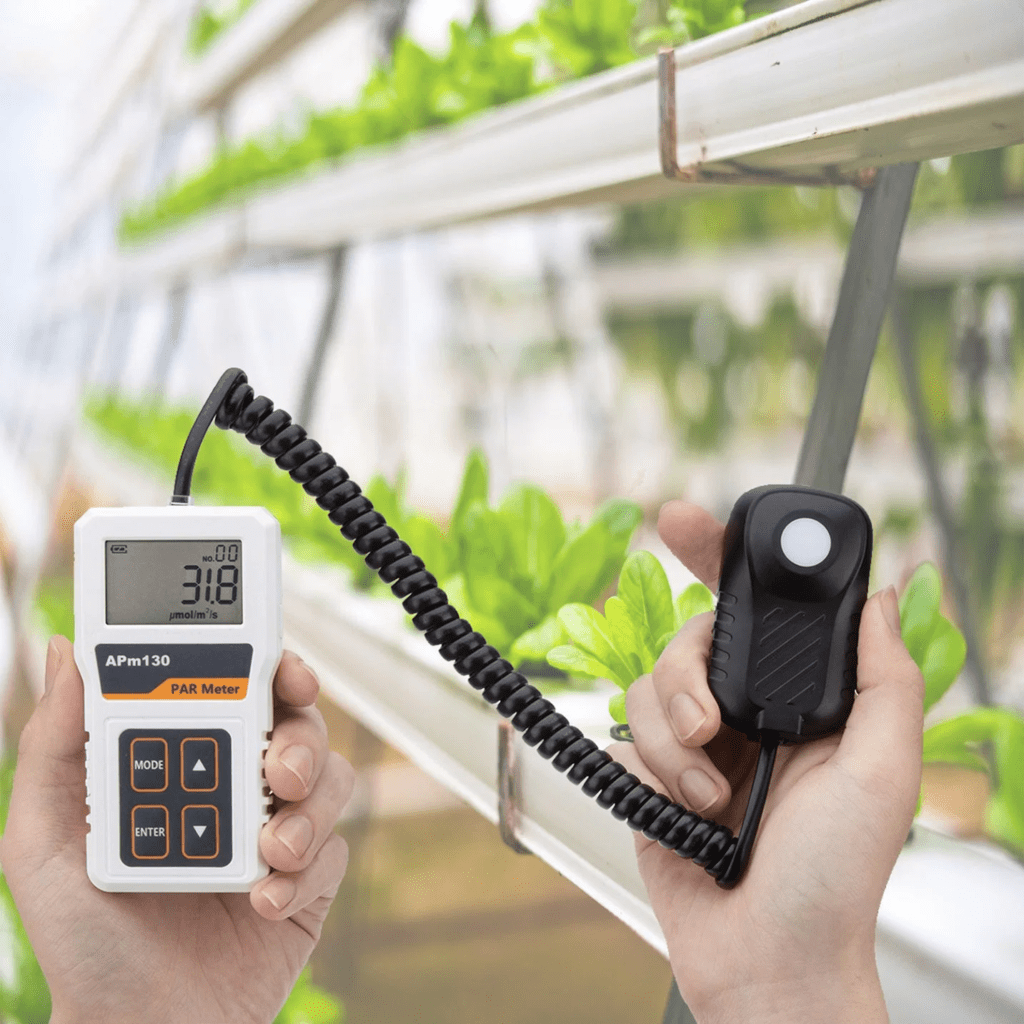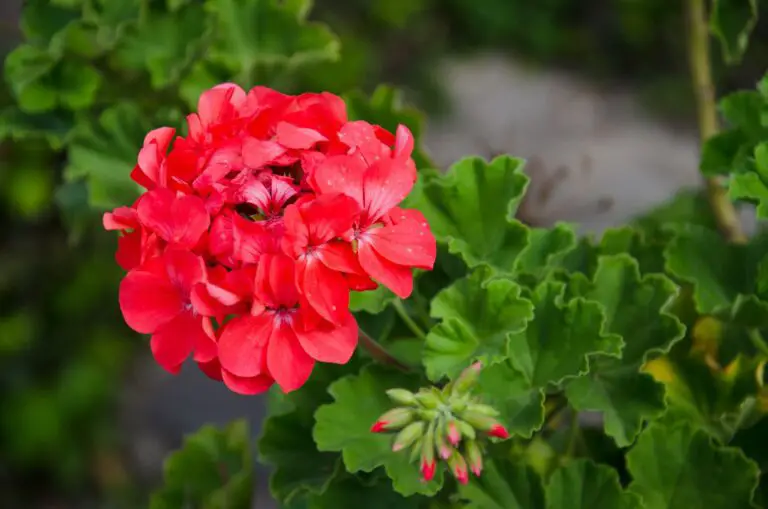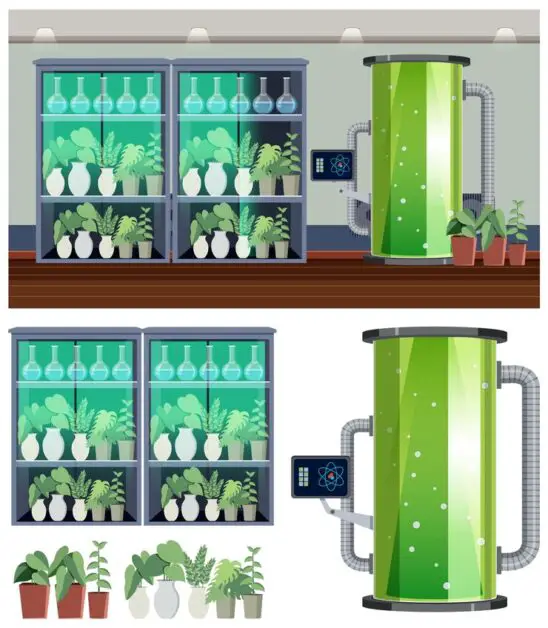How to Measure Grow Light with a PAR Meter: A Guide to Using This Device to Measure Your Grow Light Performance and Quality
Table of Contents
What is a PAR Meter and Why is it Important for Measuring Grow Light Performance?
A PAR (Photosynthetically Active Radiation) meter is a device used to measure the intensity and quality of light that plants need for photosynthesis. It is an essential tool for growers, as it provides accurate information about the performance of their grow lights and enables them to optimize their lighting setup for maximum plant growth and yields.
The PAR meter measures the amount of light in the spectral range of 400 to 700 nanometers, which corresponds to the wavelengths that plants use most efficiently for photosynthesis. By measuring the photosynthetic photon flux density (PPFD) in micromoles per square meter per second, the PAR meter gives growers a quantitative measure of the light available to their plants. This allows them to assess the effectiveness of their grow lights, identify areas with inadequate light, and adjust their lighting setup to ensure optimal plant growth.

Accurate PAR measurements are crucial for several reasons. Firstly, they provide growers with data to evaluate the light intensity and quality in different areas of their growing space, allowing them to make informed decisions about the placement and positioning of their grow lights. Secondly, PAR measurements help growers to identify and rectify any deficiencies in their lighting setup, such as uneven light distribution or insufficient light penetration. Finally, monitoring PAR values over time helps growers to track the performance of their grow lights, make necessary adjustments, and ensure consistent and optimal conditions for plant growth. In conclusion, a PAR meter is an invaluable tool for any grower looking to optimize their grow light performance and achieve the best possible results in their gardening endeavors.
Understanding the Key Parameters of a PAR Meter for Accurate Measurement
PAR meters are essential tools for accurately measuring grow light performance. To ensure precise measurements, it is important to understand the key parameters of a PAR meter. The two most important parameters are spectral range and quantum sensor sensitivity.
The spectral range refers to the range of wavelengths that the PAR meter can measure. It is crucial to select a PAR meter with a spectral range that matches the light spectrum emitted by your grow lights. This ensures that the meter captures all the relevant wavelengths for accurate measurement. Different plants have different light requirements, and using a PAR meter with the appropriate spectral range allows you to fine-tune your grow light setup for optimal plant growth.
Quantum sensor sensitivity is another crucial parameter. It refers to how well the PAR meter can detect and convert light energy into an electrical signal. A higher sensor sensitivity allows for more accurate and precise measurements, especially in low light conditions. Investing in a PAR meter with a high quantum sensor sensitivity ensures that you can obtain reliable readings even in challenging lighting environments.
By understanding these key parameters of a PAR meter, you can make informed decisions when selecting the right meter for your needs. Consider the spectral range and quantum sensor sensitivity to ensure accurate measurements of your grow light performance. With the right PAR meter, you can optimize your grow light setup and provide the ideal light conditions for your plants’ growth and development.

Preparing Your Grow Light and Environment for PAR Measurement
To ensure accurate and reliable PAR measurements, it is crucial to prepare your grow light and environment properly. Here are some key steps to follow:
1. Clean your grow light: Dust and dirt can affect the accuracy of PAR measurements, so it is essential to clean your grow light thoroughly before taking readings. Use a soft, lint-free cloth to remove any debris from the light’s surface and reflectors. This will help ensure that the light output is not impeded and that the PAR meter can capture accurate readings.
2. Eliminate stray light: Stray light from other light sources in your growing area can interfere with PAR measurements, leading to inaccurate readings. Before measuring, make sure to turn off any other lights and cover any windows to prevent outside light from contaminating the readings. Creating a light-tight environment will help ensure that the PAR meter captures only the light emitted by your grow light, providing precise measurements.
By following these preparatory steps, you can create an ideal environment for PAR measurement, minimizing potential errors and obtaining accurate readings. This will allow you to make informed decisions regarding your grow light setup and optimize the lighting conditions for your plants’ growth and development.
Step-by-Step Guide to Calibrating Your PAR Meter for Precise Readings
Calibrating your PAR meter is crucial to ensuring accurate readings of your grow light’s performance. By following a step-by-step guide, you can achieve precise measurements that will help you optimize your plants’ growth and achieve the desired results.
1. Prepare your PAR meter and environment: Before calibrating your PAR meter, make sure it is clean and free from any dust or debris that may affect its accuracy. Ensure that the environment is stable, with minimal fluctuations in temperature and humidity. This will help prevent any interference that could impact your calibration process.
2. Establish a reference point: You need a reliable light source with known PAR values to calibrate your meter. Use a high-quality, calibrated illuminance meter as your reference point. Position the illuminance meter at the same height as your grow light and note down its readings.
3. Compare PAR meter readings: Turn on your PAR meter and position it next to the illuminance meter. Ensure both meters are at the same height and distance from the light source. Record the PAR meter readings and compare them to the illuminance meter. The goal is to adjust the PAR meter’s settings until it matches the known illuminance values.
4. Adjust calibration settings: Most PAR meters come with calibration buttons or options to adjust the readings. Refer to the user manual of your specific PAR meter to determine the calibration process. Typically, it involves entering the known illuminance values and allowing the meter to adjust its internal settings accordingly.
5. Verify accuracy: After adjusting the calibration settings, repeat the process by comparing the PAR meter readings to the illuminance meter. If the readings now match closely, your PAR meter is accurately calibrated. However, if discrepancies persist, repeat the adjustment process until satisfactory results are achieved.
By following this step-by-step guide, you can confidently calibrate your PAR meter for precise readings. This calibration accuracy is essential for effectively monitoring and optimizing your grow light setup, ensuring the ideal light levels for your plants’ growth and development.
Determining the Optimal Positioning for Your PAR Meter
Determining the optimal positioning for your PAR meter is crucial for obtaining accurate and reliable readings of the photosynthetically active radiation (PAR) emitted by your grow lights. The placement of the PAR meter will directly affect the measurements taken and can impact the overall efficiency and effectiveness of your grow light setup.
When positioning your PAR meter, it is important to consider the height and distance from the light source. To ensure accurate readings, place the meter at the same level as the plants or canopy being illuminated. This will provide a more representative measurement of the light received by the plants and facilitate better decision-making regarding light intensity and duration.
| Criteria | Optimal Positioning |
|---|---|
| Light Source | Directly under primary light source or canopy level. |
| Distance from Light Source | 6-12 inches below light source. |
| Coverage Area | Cover entire grow area; take multiple readings. |
| Hanging Height | Same height as plant canopy for overhead lighting. |
| Light Spectrum | Use a meter calibrated for your specific light spectrum. |
| Movement and Averaging | Minimize movement, average multiple readings. |
| Calibration | Regularly calibrate the PAR meter. |
| Record Keeping | Keep detailed records for analysis. |
| Light Intensity Changes | Adjust readings for intensity variations. |
Additionally, the distance between the PAR meter and the light source should be taken into account. It is recommended to position the meter at a distance of approximately 12 to 18 inches away from the light source for optimal accuracy. This distance allows for a balanced measurement, avoiding overly intense readings close to the light or weak readings when positioned too far away.
By carefully determining the proper height and distance for your PAR meter, you can ensure that your measurements reflect the actual light intensity your plants are receiving. This will enable you to fine-tune your grow light setup, optimize plant growth, and maximize the efficiency of your cultivation efforts.
Proper Technique for Measuring PAR Values with a PAR Meter
When measuring PAR values with a PAR meter, using the proper technique is crucial to ensure accurate and reliable results. To get the most precise readings, start by positioning your PAR meter at the same height as the top of your plant’s canopy. This will help you measure the light that actually reaches the plants, providing you with meaningful data for optimizing your grow light setup.
Next, make sure to take multiple measurements at various points within your garden or grow space. This will give you a more comprehensive understanding of the light distribution, helping you identify any potential hotspots or areas with insufficient light. By taking multiple readings and averaging them, you can minimize any variations caused by factors such as distance or angle from the light source.
Additionally, it’s important to keep in mind that PAR readings can vary depending on the angle at which the light hits the sensor of the PAR meter. To account for this, move the meter around the plants and take readings from different angles to get a more accurate representation of the overall light intensity.
By following these proper techniques, you can gather precise PAR data that will enable you to make informed decisions about your grow light setup and optimize your plant’s growth and development.
Interpreting PAR Readings: What Do the Numbers Mean for Your Plants?
When it comes to interpreting PAR readings for your plants, understanding the numbers is crucial for ensuring optimal growth and maximizing the efficiency of your grow light setup. PAR, or Photosynthetically Active Radiation, refers to the portion of light that plants can use for photosynthesis. The higher the PAR value, the more light energy your plants are receiving, which is essential for their growth and development.
To interpret PAR readings effectively, it’s important to know the specific lighting needs of your plants. Different types of plants have varying light requirements, and understanding these requirements will help you determine whether the PAR values are within the desired range. For example, high-light plants such as tomatoes or peppers typically require PAR values in the range of 400-600 μmol/m²/s, while low-light plants like lettuce or herbs may thrive at PAR values around 200-400 μmol/m²/s.
By regularly monitoring and analyzing PAR readings, you can make informed decisions about adjusting your grow light setup to optimize plant growth. If the PAR values are too low, you may need to increase the intensity or duration of your lighting. On the other hand, if the PAR values are too high, you might need to adjust the positioning of your grow lights or consider using light diffusers to prevent light damage to your plants. Remember, accurate interpretation of PAR readings ensures that your plants are receiving the right amount of light for optimal photosynthesis and healthy growth.
Factors Affecting PAR Measurement Accuracy and How to Minimize Errors
Factors Affecting PAR Measurement Accuracy and How to Minimize Errors
Accurate measurement of photosynthetically active radiation (PAR) is crucial for optimizing the performance of grow lights in indoor gardening. However, there are several factors that can affect the accuracy of PAR measurements, and it is important to be aware of these to ensure reliable data.
One significant factor that can impact PAR measurement accuracy is the distance between the light source and the sensor. As the distance increases, the intensity of light decreases, leading to lower PAR readings. It is recommended to place the sensor at a fixed distance from the light source to maintain consistency in measurements.
Another factor to consider is the angle of incidence. PAR sensors are designed to capture light directly perpendicular to the sensor surface. Any deviation from this perpendicular angle can result in inaccurate readings. Therefore, it is crucial to position the sensor in a way that it receives light directly from the source, without any obstructions or reflections.
To minimize errors in PAR measurements, it is important to regularly calibrate the PAR meter. Over time, sensors can become less accurate due to drift or variations in their sensitivity. A proper calibration procedure involves comparing the readings of the PAR meter to a known reference source of light. This ensures that the meter is accurately measuring the intensity of PAR.
Furthermore, it is essential to consider environmental factors such as temperature and humidity, as they can affect the performance and reliability of PAR meters. Extreme temperatures or high levels of humidity can potentially damage the sensor or introduce errors in the readings. It is recommended to operate the PAR meter within the specified temperature range and to keep it away from moisture or condensation.
By understanding and addressing these factors, gardeners and indoor growers can achieve more reliable and accurate PAR measurements. This, in turn, allows them to make informed decisions about their grow light setup and optimize their plant growth and productivity. With careful attention to these factors, growers can ensure that their PAR measurements provide valuable insights for maximizing the potential of their indoor gardens.
Common Mistakes to Avoid When Using a PAR Meter for Grow Light Measurement
When using a PAR meter for grow light measurement, there are several common mistakes that you should avoid in order to obtain accurate and reliable results. One common mistake is failing to calibrate the PAR meter regularly. Calibration ensures that the meter is accurately measuring the photons in the photosynthetically active radiation spectrum, which is crucial for understanding the light intensity received by your plants. Without proper calibration, your PAR meter readings may be significantly off, leading to incorrect conclusions about your grow light’s performance.
Another mistake to avoid is improper positioning of the PAR meter. The positioning of the meter has a direct impact on the accuracy of the readings. Placing the meter too close to the grow light source or too far away can result in distorted measurements. It is important to follow the manufacturer’s guidelines on the optimal positioning distance for obtaining precise PAR readings. Additionally, pay attention to the angle at which you hold the meter, as any obstructions or shadows can affect the readings as well.
| Mistake | Explanation |
|---|---|
| Incorrect Placement | Placing the PAR meter too close or too far from the light source can lead to inaccurate readings. Follow manufacturer guidelines for optimal placement. |
| Ignoring Calibration | Neglecting to calibrate the PAR meter regularly can result in inaccurate measurements. Calibrate the meter according to the manufacturer’s instructions. |
| Not Accounting for Spectrum Differences | Different plants respond to specific light spectra. Ensure your PAR meter is appropriate for the light source’s spectrum and the plants you are growing. |
| Ignoring Ambient Light | Failing to account for ambient light in the grow area can skew measurements. Conduct readings in a controlled environment to minimize interference. |
| Overlooking Light Uniformity | Neglecting to assess light distribution across the entire grow area may lead to uneven plant growth. Measure and adjust for uniform light coverage. |
| Forgetting about Light Intensity Changes | Light intensity can change over time as bulbs age. Regularly monitor and replace light sources as needed to maintain consistent intensity levels. |
| Neglecting Maintenance | Dirty or scratched sensor surfaces can impact accuracy. Keep the PAR meter clean and in good condition to ensure reliable readings. |
| Failing to Consider Plant Growth Stage | Different growth stages require varying light intensities. Adjust the light levels based on the specific needs of the plants at each stage. |
| Relying Solely on PAR Measurements | PAR readings alone may not provide a complete picture of light quality. Consider other metrics such as spectral distribution and light duration. |
| Ignoring Manufacturer Guidelines | Each PAR meter may have specific usage instructions from the manufacturer. Follow these guidelines to ensure accurate and consistent measurements. |
By avoiding these common mistakes, you can ensure that your PAR meter provides you with accurate and reliable data on your grow light’s performance. Taking the time to calibrate the meter and position it correctly will greatly enhance the quality of your measurements, enabling you to make informed decisions about optimizing your grow light setup for the best possible plant growth and yield.
Comparing PAR Measurements: How to Evaluate Different Grow Lights
Comparing PAR Measurements: How to Evaluate Different Grow Lights
When evaluating different grow lights for your indoor garden, it is crucial to compare PAR measurements to determine their suitability for your plants’ needs. PAR, or Photosynthetically Active Radiation, refers to the range of light wavelengths that are essential for photosynthesis. By measuring the PAR output of different grow lights, you can assess their effectiveness in providing the necessary light energy for plant growth and development.
To compare PAR measurements, start by collecting data from each grow light using a PAR meter. This device accurately measures the amount of PAR emitted by a light source and provides valuable information about its performance. To ensure consistent measurements, it is important to use the same distance between the PAR meter and the light source for each measurement. This will help eliminate any variability caused by distance and allow for a fair comparison between different grow lights.
Once you have gathered the PAR measurements for each grow light, it’s time to analyze the data. Look for lights that have higher PAR values, as this indicates a greater amount of light energy available for your plants. However, it is important to consider the specific light requirements of your plants as well. Some plants, such as leafy greens, thrive under lower light levels, while others, like fruiting plants, require higher levels of PAR. By understanding the light needs of your plants, you can select a grow light that provides the optimal PAR range for their growth and productivity.
In addition to comparing PAR measurements, it is also crucial to consider other factors when evaluating different grow lights. Factors such as energy efficiency, light spectrum, and coverage area should be taken into account to ensure a comprehensive assessment. By considering these factors alongside PAR measurements, you can make an informed decision and choose the best grow lights for your indoor garden.
Using PAR Measurements to Optimize Your Grow Light Setup
Optimizing your grow light setup is crucial to ensure the success of your indoor garden. By using PAR measurements, you can fine-tune your lighting system to provide the optimal light intensity and spectrum for your plants’ needs. PAR, or Photosynthetically Active Radiation, refers to the wavelengths of light that are essential for plant photosynthesis. By accurately measuring PAR levels, you can make informed decisions about adjusting the position, intensity, and duration of your grow lights.

By regularly monitoring and analyzing PAR measurements, you can determine if your plants are receiving the right amount and quality of light. This data will enable you to identify any deficiencies or excesses in light exposure and take appropriate action. For example, if your PAR measurements indicate low light levels, you may need to increase the intensity of your grow lights or adjust their placement. On the other hand, if your plants are receiving excessive light, you may need to reduce the intensity or increase the distance between the light source and the plants.
Monitoring and Adjusting Your Grow Light Performance Based on PAR Data
Monitoring and adjusting your grow light performance based on PAR data is essential for ensuring optimal plant growth and maximizing yield. By regularly monitoring the PAR (Photosynthetically Active Radiation) data provided by your PAR meter, you can gather valuable insights into the intensity and distribution of light reaching your plants.
The first step in this process is to establish a baseline measurement. Take multiple readings across your growing area, ensuring that you capture data from different points and heights. This will provide a comprehensive understanding of the light distribution in your space. Record these measurements in a table or spreadsheet for future reference.
Once you have collected the baseline PAR data, you can begin to make adjustments to optimize light levels for your plants. Ideally, you want to achieve uniform light distribution across the entire canopy to ensure consistent growth. If you notice any areas with lower PAR values, consider adjusting the position or height of your grow lights to provide more even coverage. This can be done by raising or lowering the lights or repositioning them to fill in any gaps.
Additionally, regularly monitoring PAR data allows you to track changes in light intensity over time. By comparing current readings with previous measurements, you can identify any declines or fluctuations in light levels. This helps you identify issues such as aging bulbs or dirty reflectors that may be reducing the effectiveness of your grow lights. Taking corrective measures promptly will ensure that your plants continue to receive the optimal light required for their growth and development.
Advanced Techniques: Integrating PAR Measurements with Other Light Metrics
Integrating PAR measurements with other light metrics can provide a more comprehensive understanding of the lighting conditions for optimal plant growth. While PAR meters are widely used to measure the photosynthetically active radiation that plants utilize, they only provide a partial picture of light intensity. By combining PAR measurements with metrics such as spectral distribution and light intensity across different wavelengths, gardeners and horticulturalists can gain valuable insights into the quality and quantity of light their plants are receiving.
One important metric to consider is the spectral distribution, which refers to the distribution of light intensity across different wavelengths. Different plants have varying spectral sensitivities, meaning they respond differently to light of different wavelengths. By measuring the spectral distribution along with PAR values, gardeners can determine if their lighting setup provides a well-rounded spectrum that suits the specific needs of their plants. This information can be used to fine-tune the light source and make adjustments to optimize plant growth and development. Additionally, integrating other light metrics such as light intensity at specific wavelengths can help identify potential deficiencies or excesses in certain areas of the spectrum, allowing for targeted adjustments to ensure plants receive the ideal light conditions for their growth.
Can a PAR meter be used to measure light intensity?
Yes, a PAR meter measures photosynthetically active radiation (PAR), which is a specific range of light wavelengths that plants use for photosynthesis. Therefore, it indirectly measures light intensity for plants.
How can I calibrate my PAR meter for accurate readings?
To calibrate your PAR meter, you can use a light source with a known PAR value and compare the reading on your meter with the expected value. Adjustments can then be made to ensure precise measurements.
Are there any specific factors that can affect the accuracy of PAR measurements?
Yes, several factors can influence PAR measurement accuracy, such as the distance between the light source and the meter, the angle at which the meter is positioned, and any obstructions that may impact the light reaching the sensor.
What should I consider when comparing PAR measurements for different grow lights?
When comparing PAR measurements, it is crucial to consider factors like the spectral distribution of light, the light intensity across the entire plant canopy, and the coverage area provided by each grow light.
Can PAR measurements be used to optimize the performance of grow lights?
Absolutely, PAR measurements can provide valuable data for optimizing grow light setups. By analyzing the PAR values, you can adjust the positioning, intensity, or spectral output of the lights to better meet the specific needs of your plants.
Can PAR measurements be integrated with other light metrics?
Yes, integrating PAR measurements with other light metrics, such as light spectrum analysis or light duration, can provide a more comprehensive understanding of the light environment and its impact on plant growth and development.

Pallavi Gupta is a burgeoning writer at SouthElMonteHydroponics, blending her passion for data analysis with a keen interest in biotechnology. Currently pursuing a Bachelor’s in Biotechnology at Amity University, Pallavi delves into the intricacies of life sciences while gaining hands-on experience in the exciting world of data analysis. Her unique background provides a fresh perspective on hydroponic farming, as she explores the intersection of biotechnology and sustainable agriculture. Through her writing, Pallavi aims to bridge the gap between data-driven insights and innovative farming practices, inspiring others to harness technology for a greener future.






